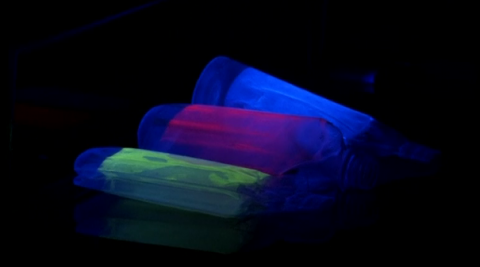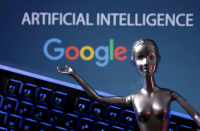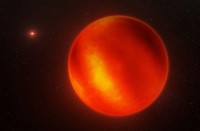
LONDON, United Kingdom (Reuters) — British-based scientists behind a new technique that adds luminescent markers to plastic packaging labels say it will lead to marked improvements in recycling rates, if applied across the industry.
Researchers at Brunel University London and their industry partners Nextek say their new technology is an inexpensive solution to low plastic container recycling rates because it can be retrofitted to existing sorting systems. The marker will only cost an additional £1 per tonne of packaging which represents approximately 100,000 packages.
Currently plastics are sorted automatically on high-speed conveyor belts. An infrared beam of radiation examines the plastic as it travels along the sorting belt at three meters a second, revealing the type of plastic depending on its type of polymer.
Such spectroscopy fails to work on black bottles and also cannot tell food grade packaging and industrial packaging apart, as Edward Kosior, managing director of Nextek, explained to Reuters.
He said: “Current recycling technologies look at the NIR (near infrared) signature of plastics, but one of the limitations is that we can’t identify what the products have been used for in the past. We can’t tell the difference between a bleach bottle and a milk bottle. This technology that we’ve been working on will be able to tell us whether something was previously food grade, so we can then recycle it back into food grade applications. We can close the circle on packaging for the first time.”
The system works by adding phosphors, the luminescent materials that give strip lights their glow, to plastic labels or to recyclable plastic packaging itself.
The invisible phosphor inks were developed by researchers at Brunel.
Dr George Fern, of Brunel’s Wolfson Centre for Materials Processing, explained the process.
“When the plastic bottles are sent to the recycling plant, if they have our labels on, they go up the conveyor belt in the normal way,” he told Reuters. “There’s a system for reading the bottles currently with our labels on – that system can be changed quite easily to then recognize a bottle we want to sort, either positive or negative. Then the conveyor belt system puts a jet of air that separates the bottle into another bin.”
The technique is known as PRISM – standing for Plastic Packaging Recycling using Intelligent Separation Technologies for Materials. In initial full-scale tests it collected 95-98 percent of labelled plastics with up to 100 percent accuracy. The project has nine participants and is cofounded by Innovate UK.
Kosior says its low cost will make plastic recycling a more financially attractive proposition to business.
“This technology can be applied to polypropylene to split non-food grade from food grade applications and then we can recycle these back to high quality, high value, applications and we can then boost the economics of the recycling of plastics,” he said. “This is where a lot of recyclers struggle because the value of the material is relatively low so they get little value, and so there’s little investment. By creating new high value end markets for plastics we can actually lift our recycling rates.”
Professor Jack Silver, theme leader for materials characterization and processing at Brunel, has worked on phosphor research for many years and says his team’s work could be adapted to different industries.
“It’s a natural consequence of using phosphors for other things and of course it doesn’t have to be confined to plastics,” said Silver. “It could be of interest in the automotive industry, electronics industry, and the building industry. You could also use them to label things so future generations would know the dangers of materials. It can be a way of recording information for the future as a form of code.”
The project has been underway for little over a year, but Kosior says there has already been much interest from large brand owners.
He says the technology would boost recycling rates in polypropyelene food packaging by 15 percent almost immediately, if introduced, while the capacity to identify hard-to-recycle materials will create new recycling opportunities where they don’t currently occur.
In the UK only an estimated 29 percent of the five million tons of plastic used every year is currently recycled.








